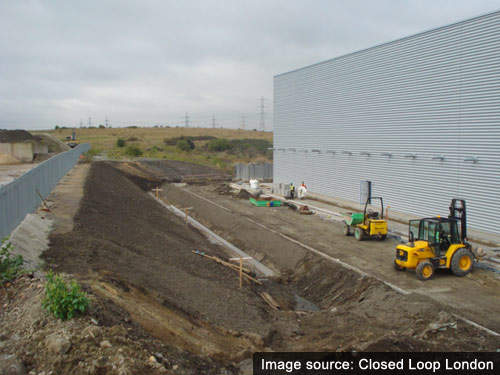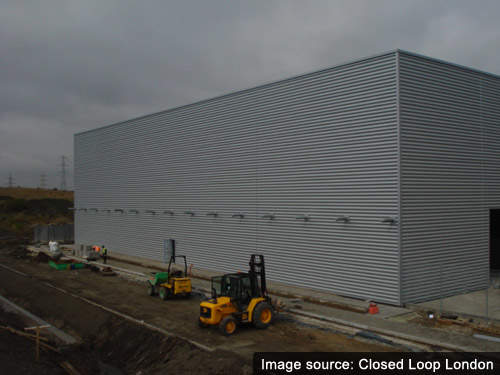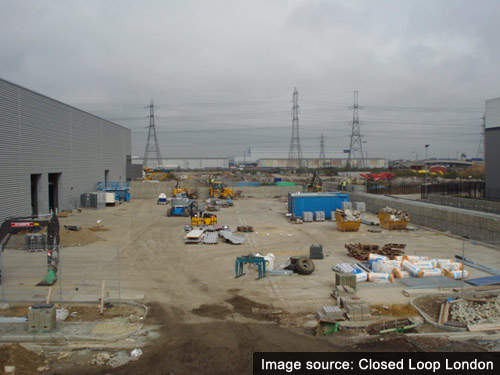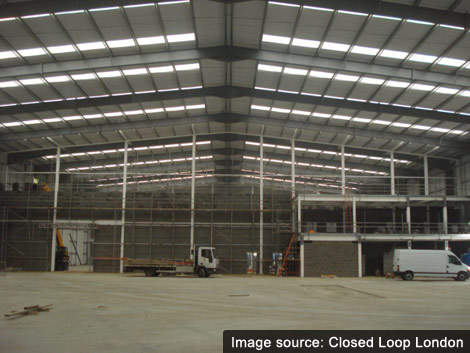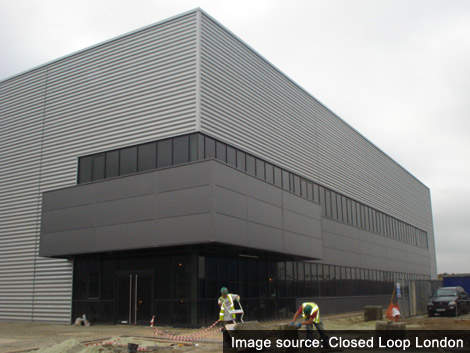To meet the UK’s growing need for polyethylene terephthalate (PET) recycling, the country’s first PET recycling facility was built in the Thames Gateway in Barking and Dagenham in east London. The plant is managed by Closed Loop Environmental Solutions of London, part of Visy Closed Loop, which has been successfully recycling PET in Australia since 2001. The UK plant converts 35,000t a year of wastewater, soft drinks and cosmetics PET bottles into food packaging (910 million bottles).
The plant was opened in June 2008 and cost £12m to construct and outfit. The recycling plant is estimated to reduce about 52,500 tons of carbon emissions every year. Marks & Spencer was the first company to agree to direct plastic waste from its stores in London to the recycling plant. M&S also urged its suppliers to use the PET manufactured at the plant to make packaging for its products.
In September 2008, Closed Loop announced that it would open a second recycling plant in Deeside, with a planned capacity of 50,000t per annum. The plant will be built in an area of 90,000ft2 and will require an investment of £30m. In July 2010, Closed Loop engaged UBS, a Swiss global financial services provider, to arrange funding for the Deeside plant. The company plans to develop several such plants across the UK in the next few years.
In February 2011, Closed Loops declared to expand its Dagenham plant to convert additional 25,000 tons of PET. To undertake this expansion, the company will buy three acres of land next to its Dagenham site. The expansion is estimated to cost £12m and the construction is expected to begin in the last quarter of 2011.
Closed Loop PET recycling process
The plant uses a patented process technology developed by the South Carolina-based United Resource Recovery. The process has been tested and passed as safe for use in food applications in the US and Europe.
The process includes three steps – sorting, granulating and washing and decontamination. During sorting, the PET bottles are transported to the plant in the form of square bales. These bales are placed on a convertor belt which rotates in a motion similar to a rotating drum. The motion of the conveyor belt separates excess dirt, paper and lids from the PET bottles.
The PET bottles are then sorted manually and by using optical laser machines. The optical laser machine sorts the PET bottles into five categories – clear PET bottles, light blue PET bottles, HDPE bottles, colored PET bottles and other plastics. Sorting is done manually also to ensure that all contaminants are removed.
After sorting, the PET bottles are passed through granulators which cut the bottles into small flakes. These flakes are transported throughout the plant through pipes and blowers. They are at a dry cleaner which takes out anything lighter than the flakes. The last step involves washing of the flakes with a solution of caustic soda for 15 minutes to remove glue and label shards.
The final step of the recycling process involves decontamination, in which the flakes are sprayed with caustic soda and passed through a rotating kiln at 200°C for five hours. The flakes are then cooled, rinsed and dried and passed via a laser Raman spectroscopy sorter. Here any contaminated items and residue are detected and removed.
The HDPE flakes produced are passed through a Vacurema, a devide which melts the plastic and passes it through filters to remove food contamination. The plastic is then extruded, divided into small pellets, cooled and packaged to be sold to plastic manufacturers.
Project finance
The project was funded by a number of private partners including the venture capitalists Foresight Venture Partners and the Allied Irish Bank.
Contractors
The Haden Freeman Group (HFL) was appointed to build the recycling plant. The plant is operated by Birwelco (a subsidiary of HFL).
Environment
The recycling plant features several eco-friendly initiatives which reduce its carbon and energy footprint. The plant features solar panels for heating the domestic hot water service. Electricity needed by the plant is supplied by roof mounted wind turbines which reduce the plant’s need for grid electricity. In addition, the grid electricity used by the plant is sourced through green tariffs.
The plant includes a 500KW CHP plant which generates electricity from waste heat resulting from the PET recycling process. The plant has also incorporated rainwater harvesting to supply greywater to the building. A passivent fresh air collection system is included in the plant to remove the need of fans, which in turn reduces electricity consumption.

